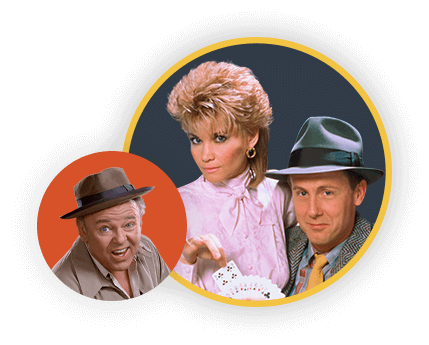How My Three Sons star Fred MacMurray became one of the wealthiest actors in the biz

When Fred MacMurray passed away in 1991, his obituary in The New York Times revealed a rather shocking fact about the actor — at one point in his career, he was the fourth highest-paid citizen in the United States. His image disguised his wealth, as audiences pictured the fellow as a simple man who enjoyed a pipe and comfy slippers. Family fare like My Three Sons and The Shaggy Dog built that fatherly, cardigan-clad image of the MacMurray. It turns out, however, the film title on his resume that best described his life was The Happiest Millionaire.
In 1943, MacMurray raked in $420,000 in salary. That translates to about $6.5 million today. Seems like small potatoes by modern standards, no? Backup point guards in the NBA make more. But in the World War II era, that made him the highest earner in Hollywood.
At that time, MacMurray was a handsome leading man, showing his range by headlining romantic comedies (No Time for Love), aviation adventures (Dive Bomber), spy flicks (Above Suspicion), and Westerns (Rangers of Fortune). His greatest role, the defining film noir Double Indemnity, was just around the corner.
But his movie paychecks were just a fraction of his fortune. And, in fact, his connection to the film noir genre ran deeper than his starring roles in black-and-white crime flicks.
In 1944, not long after Double Indemnity hit screens, MacMurray plopped down $600,000 and purchased the Bryson Apartment Hotel, a gorgeous white Beaux-Arts building in Los Angeles. The Bryson had a long association with noir. The great crime novelist Raymond Chandler featured the Bryson in several of his works, including The Lady in the Lake and the screenplay to Double Indemnity.
Astute viewers can also spot the 10-story structure in a few episodes of Perry Mason. It was the "Hotel Redfern" in "The Case of the Daring Decoy," and also served as locations in "The Case of the Long-Legged Models" and "The Case of the Howling Dog."
 MacMurray owned the iconic Bryson Apartment Hotel when it appeared on Perry Mason, seen here.
MacMurray owned the iconic Bryson Apartment Hotel when it appeared on Perry Mason, seen here."The Bryson contains 97 apartments and is one of the largest structures in the Wilshire district," the Los Angeles Times noted when it reported MacMurray's purchase on the front page in September 1944. MacMurray owned the place for three decades.
"His apartment houses and real estate are worth several hundred thousand dollars," The Plain Speaker reported in 1946.
"The actor bought his first apartment house for a 'song' in 1936," The Kansas City Star wrote in a profile of his wealth in 1949. He later flipped the property for a huge profit.
Real estate was just one aspect of his portfolio. Beef and freezers fattened his bank account. "The MacMurray ranch produces some of the finest cattle in the west," The Plain Speaker boasted. "His latest venture, frozen food lockers, promises to add to his fortune." He owned a knitting mill in downtown Los Angeles. He was a part owner of the California Country Club and Westside Tennis Club. He had stock in oil wells.
His business savvy carried over into his acting profession. "Now MacMurray won't make a picture unless, in addition to a guarantee of $175,000, he is given a share of the profits," The Star said.
So the next time you watch My Three Sons, don't just listen to his parenting skills, heed whatever financial advice he might give.





